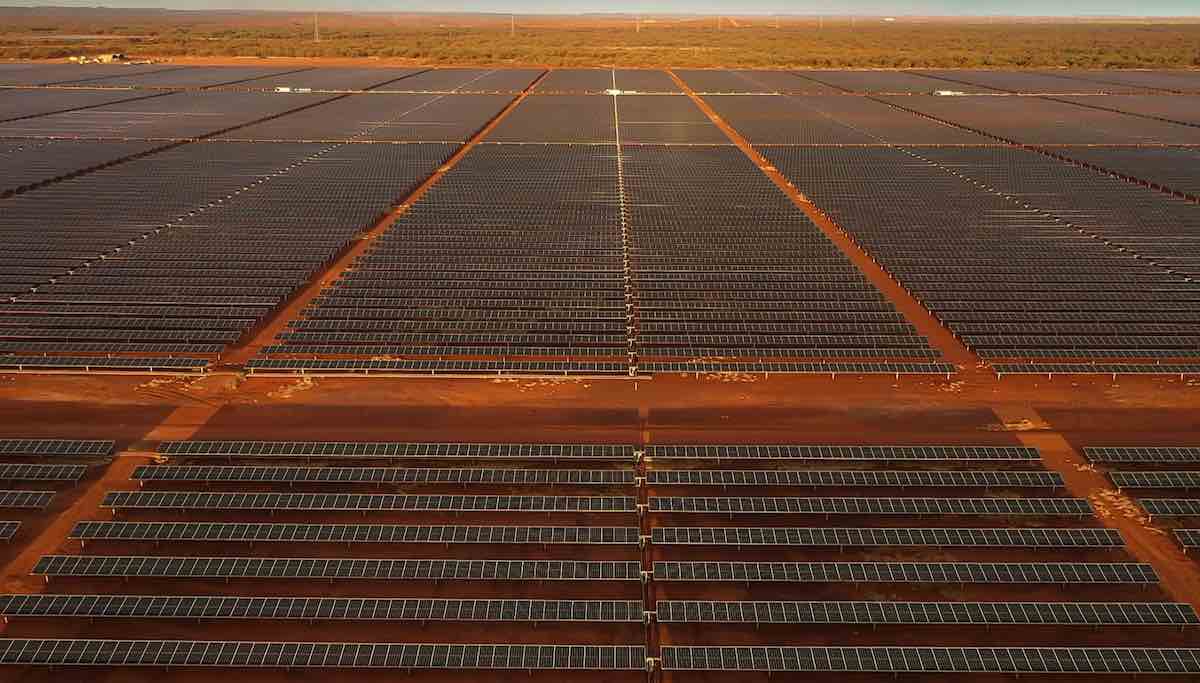SunCable is seeking approval to build solar and battery arrays at the famous Muckaty station in the Northern Territory, which it says has potential to host up to 20 gigawatts of capacity to meet surging demand from data centres.
The application from SunCable – majority owned by software billionaire Mike Cannon-Brookes – was lodged with NT environmental authorities this week and lays out plans for big solar blocks, each sized at 250 megawatts (AC), that can be built in stages as off take agreements with data centre owners are signed.
The proposed Muckaty solar precinct is additional to the massive Asia PowerLink project that has already received approvals for 10 gigawatts of capacity at Powell Creek, and a major transmission line to Darwin, which is also targeting local industrial demand and a potential sub-sea link to Singapore.
The shift to meeting data centre demand in the short term was flagged by its newly appointed CEO Ryan Willemsen-Bell in September, who noted the falling costs of solar and battery storage were proving attractive to data centre owners.
“The option to supply customer projects in the Barkly on an earlier timeline allows us to demonstrate delivery, build momentum, and create confidence in the project, while continuing to progress power supply to Darwin and Singapore in our delivery schedule,” a spokesperson said at the time.
“Our immediate focus is a pragmatic one: building generation and storage capacity that can begin supplying customers in the near term, while laying the foundations for a larger, long-term energy export system.”
In an emailed statement, SunCable confirmed that it has identified land within the Muckaty Aboriginal Land Trust, about 870 kms south of Darwin, as a potential site for a new solar and battery energy precinct.
“The proposal has been accepted by the NT EPA for public comment, and we welcome community feedback as part of the environmental assessment process,” the statement said.
“SunCable is committed to transparent engagement throughout this process and looks forward to working with Traditional Owners, landholders, and other stakeholders as feasibility studies and environmental assessments progress.”
The planning application makes clear that the number of solar fields built in each stage would be dictated by customer off take agreements. The application lays out plans for modular blocks combining solar arrays, with single axis tracking and battery storage.
“SunCable is targeting a final investment decision (FID) on the already-approved AAPowerLink Project towards the end of 2027,” the application says.
“Initial stages of that project’s delivery will likely commence with construction of the Powell Creek Solar Precinct, and the transmission system from Powell Creek to Darwin. Power delivery to customers in Darwin from the AAPowerLink Project is scheduled from 2032 onwards.
“Delivery of the Muckaty Solar Precinct generation sites (the subject of this Referral Report) would be driven by the timing and scale of offtake agreements.”
Muckaty is a former cattle station that was degraded and overstocked and ultimately returned to the Muckaty Aboriginal Corporation in 1991, which then focused on regenerating the landscape. It was then named as a potential site for Australia’s first radioactive waste storage facility, but than plan was dismissed.
It is now used primarily for traditional Indigenous uses, including conservation and managed resource protection and for low intensity cattle grazing activities.
The documents say that an overhead transmission line will be required to link Muckaty with Powell Creek to the north.
“From Powell Creek, the already approved AAPowerLink Project’s OHTL will be used for transmission over long distances to end-use customers in Darwin and Singapore,” the application says.
“The additional power generated at Muckaty will underpin the business case for investment in building out the full 6 GW AAPowerLink Project OHTL.
“Building the full 6 GW capacity up front has significan commercial, environmental, and social benefits over the alternative of building multiple lower capacity transmission routes over time.”
If you would like to join more than 26,600 others and get the latest clean energy news delivered straight to your inbox, for free, please click here to subscribe to our free daily newsletter.
Giles Parkinson is founder and editor-in-chief of Renew Economy, and founder and editor of its EV-focused sister site The Driven. He is the co-host of the weekly Energy Insiders Podcast. Giles has been a journalist for more than 40 years and is a former deputy editor of the Australian Financial Review. You can find him on LinkedIn and on Twitter.

